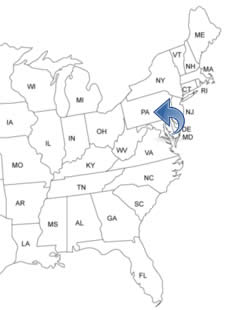PENNSYLVANIA PEOPLE SEARCH!
- ✔ Contact Info
- ✔ Phone Numbers
- ✔ Criminal Records
- ✔ Income Info
- ✔ Neighbors
- ✔ People's Age
- ✔ Property Ownership
- ✔ And Much More
Pittsburgh, Pennsylvania
Pittsburgh is located in the western part and is the second largest city in the U.S. State of Pennsylvania. City of Bridges. Steel City. City of Champions. Pittsburgh has a rich history and the unique terrain has resulted in an unusual city design. With a unique combination of bridges, steep hills, and broad rivers, Pittsburgh is one of the most naturally scenic cities in the country. The city is a former steel manufacturing base but today its economy is largely based on education, financial services, healthcare, technology, and robotics. Pittsburgh is ranked in the top 10 best places to raise a family in and the 4th best city for working mothers to live in.
To See And To Do In Pittsburgh
- Downtown Pittsburgh Info Center For Tourist Information
- Carnegie Science Center
- Andy Warhol Museum
- Bloomfield Preservation And Heritage Society Museum
- Carnegie Museum Of Natural History
- Mount Washington Overlooks
- Allegheny County Courthouse
- Allegheny Observatory
- First Lutheran Church
- Pittsburgh Penguins Hockey Team
- Pittsburgh Zoo And PPG Aquarium
- Mattress Factory
- Frick Park
- Frick Art And Historical Center
- Frick Fine Arts Building
- Point State Park
- Wood Street Galleries
- Schenley Park
- Soldiers And Sailors Museum
- Children's Museum Of Pittsburgh
- Pittsburgh Glass Center
- East Liberty Presbyterian Church
- Senator John Heinz History Center
- Heinz Memorial Chapel
- St. Anthony's Chapel
- U.S. Steel Tower
- Gulf Tower
- Mellon Arena
- Highland Park
- North Shore Riverfront Park
- South Side Riverfront Park
- West End Overlook
- Rivers Casino
- Station Square
History Of Pittsburgh - Timeline
In 1669, the first European visited the site of Pittsburgh. In 1710, Europeans traders arrived and in 1717, they established posts and settlements in the area. In 1748, Europeans settled in the region permanently. In 1751, a trading house was built by the French.
In 1753, George Washington came to the Pittsburgh region and described the land as an extremely well-situated place for a Fort. In 1754, the French built Fort Duquesne, to honor the governor-general of New France, Marquis de Duquesne.
In 1758, the British took control over Fort Duquesne. It was destroyed and replaced by Fort Pitt. General John Forbes named it to Pittsburgh in honor of the British statesman William Pitt. In 1760, there were 149 settlers living in Pittsburg, besides the soldiers.
In 1761, a census ordered by Colonel Henry Bouquet counted 332 people and 104 houses in the town. In 1770, George Washington once again arrived for a visit in Pittsburgh. In 1773, the Strip District in Pittsburgh was settled.
In 1786, the newspaper Pittsburgh Post-Gazette was published. In 1786, the first market house was built. In 1787, Pittsburgh Academy was incorporated. In 1788, a mail service was established to Pittsburgh. In 1794, the town first courthouse was built.
In 1800, more than 1,500 people were living in the town. In 1804, the first bank opened. In 1811, the first steamboat was built in the town.
In 1816, Pittsburgh was incorporated as a city and oil lamps were installed as the city's first street lights. In 1826, the first water reservoir was built and in 1828, the water-supply system from the water reservoir was complete. In 1834, the Pennsylvania Main Line Canal was completed and Pittsburgh was connected to Philadelphia via canal and railroad. In 1835, the first public school opened.
In 1837, gas lights were working on the streets of the city and in stores. In 1841, the second Court House was completed. In 1845, a fire destroyed more than 980 buildings and made 12,000 homeless. In 1846, the telegraph came to the city. In 1853, the first post office building was built.
In 1854, 400 people died within two weeks of a cholera epidemic. In 1855, the first public high school was opened. In 1859, a horsecar for 14 passengers began operating in the city. In 1862, 78 people were killed and about 160 people were injured in an explosion in a Union army factory.
In 1870, the first paid fire department was organized. In 1871, the Pittsburgh Grand Opera House was completed. In 1880, electricity and electric lights were working in the city. In 1884, the Allegheny County Courthouse was completed. In 1888, the first electric streetcar was placed in service. In 1881, telephones were in use.
In 1900, Carnegie Mellon University was founded and more than 321,000 people were living in the city. In 1903, the first baseball world series was played. In 1905, the first motion picture house in the USA, the Nickelodeon, opened in Pittsburgh. In 1919, Mayer Field, the first commercial airport in the city, was established.
In 1920, the commercial radio station, KDKA, began to broadcast. It was the first commercial radio station in the United States. In 1927, the Pittsburgh Symphony was founded. In 1936, the worst flood in Pittsburgh's history killed 69 people and destroyed thousands of buildings.
In 1953, Dr. Jonas E. Salk and his staff reported they had done success of a new polio vaccine. It was tested on 90 people. In 1964, Ralph Barnett became the city's first black police inspector. In 1974, the professional football team, Pittsburgh Steelers, won the Super Bowl Championships for the first time. In 1989, mayor Sophie Masloff became the first female mayor in Pittsburgh. In 1991, the hockey-team, Pittsburgh Penguins, won the Stanley Cup for the first time.

